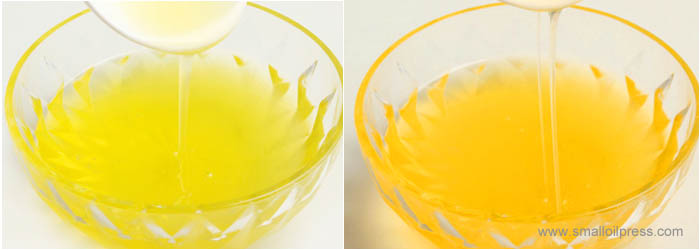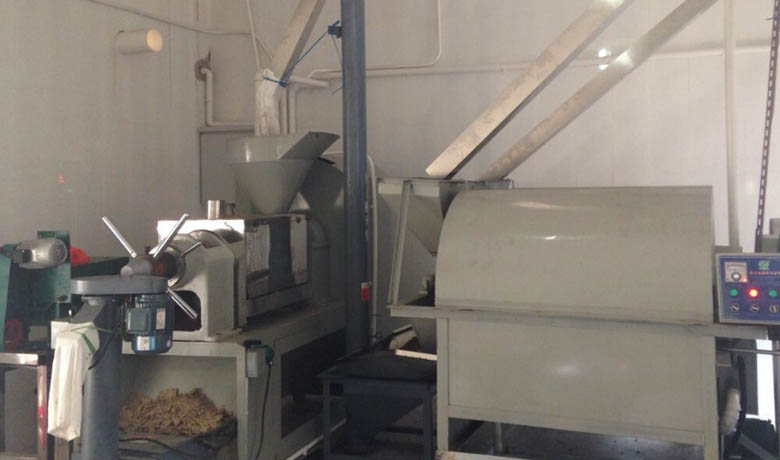Analysis of different impacts on oil using hot press, cold press and extracting process
Oil equipment using hot press, cold press and extracting process will have certain influence on oils. In the following content, we would take peanut oil production as an example to analyse the influence of different processes on the oil produced:

Analysis of different impacts on oil using hot press, cold press and extracting process
After storing for more than one year, the quality index, characteristic index, VE content and oxidation induction time of peanut oil samples from different oil production processes are changed compared with fresh peanut oil. Most obviously, the peroxide value of the three old peanut oil rises significantly, which is 2.72 ~ 6.96 times of the peroxide value of fresh peanut oil. VE content of extracted and refined peanut oil significantly reduces to less than half of fresh peanut oil with serious color reversion and flavor deterioration.
Due to the different oil production process, the quality index (acid value, peroxide value, colour and flavor), characteristic index (iodine value, saponification value, refractive index), VE content and oxidation induction time of the peanut oil produced are also different. The acid value, peroxide value and colour of extracted and refined peanut oil is superior to pressed peanut oil, but it has the lightest fragrance and the minimum saponification value. The iodine value, refractive index and relative density of extracted and refined peanut oil have little difference with pressed peanut oil; the content of VE and oxidation induction time of hot pressed peanut oil are significantly better than that of the extracted refined peanut oil (respectively 1.69 times and 3.3 times of extracted refined peanut oil).
The main fatty acid composition of peanut oil produced from different oil production differs little, but the linoleic acid and linolenic acid content of cold pressed peanut oil are higher than the other two kinds of peanut oil, and the linoleic acid content of extracted and refined peanut oil is significantly lower than pressed peanut oil. In addition, there are trans fatty acids in extracted and refined peanut oil, while no trans fatty acids are detected in hot pressed peanut oil and cold pressed peanut oil. It may be used as the characteristics index to distinguish and evaluate the pressed peanut oil and extracted peanut oil.

In a word, fresh scent peanut oil and edible peanut cake (used as edible peanut protein powder after grinding) produced by cold pressing process has drawn the increasing attention and applied in some large oil plant. The cold pressing process of double spiral oil press maximumly retained the characteristics of original ecological oil process, the peanut oil produced has light colour and faint scent, gradually accepted and praised highly by consumers.
Here is an analysis of the different impacts on oil using hot press, cold press, and extracting processes:
Hot Pressing:
Hot pressing involves applying heat to the seeds or nuts to increase the oil yield. The seeds are first cleaned and then cooked at high temperatures, and the oil is extracted through pressing. The heat helps to break down the cell walls of the seeds, making it easier to extract the oil. However, the high temperature can also affect the quality of the oil, causing it to lose some of its nutrients and flavor.
Cold Pressing:
Cold pressing is a process of extracting oil from seeds or nuts without using heat. The seeds are first cleaned and then pressed at room temperature or with a slight temperature increase. The oil extracted from cold pressing is often considered to be of higher quality because it retains more of its natural nutrients and flavor. However, the yield of oil is usually lower than that of hot pressing.
Extracting Process:
The extracting process uses a solvent, such as hexane, to extract oil from seeds or nuts. The seeds are first cleaned and then ground into a paste, which is then mixed with the solvent. The solvent dissolves the oil, and the resulting mixture is heated to evaporate the solvent, leaving behind the oil. This process is highly efficient and can yield a large amount of oil. However, the use of solvents can affect the quality of the oil, and residual solvents may remain in the final product.
—What is the difference between pressing and solvent extraction?
In summary, each oil extraction process has its advantages and disadvantages. Hot pressing yields a high amount of oil, but the quality of the oil may be compromised. Cold pressing produces high-quality oil, but the yield is lower. The extracting process is efficient but may lead to lower quality oil with potential residual solvents. Ultimately, the choice of extraction process depends on the desired yield, quality, and intended use of the oil.

